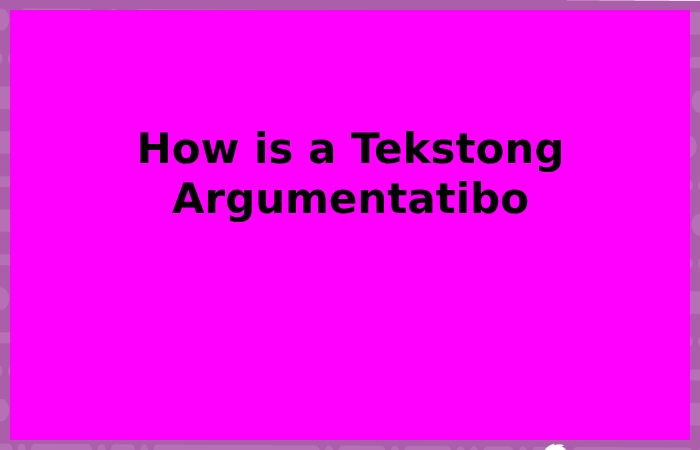Tekstong Argumentatibo refers to writing in which the writer can choose a position: “for” and “against” and suggests the attitude of both sides. It is the skill of juxtaposing evidence that shapes reasoning into rational thought. It involves an iterative process in which critical and logical analysis leads to a concrete conclusion that paves the way for further studies.
Table of Contents
How is a Tekstong Argumentatibo structured?

A Tekstong Argumentatibo aims to put forward a lookout clearly and simply, supported by data and a reasonable conclusion to back it up. To do this, track the structure below:
Briefly explain the subject matter allocated within the text and provide the essential background so the reader can understand your position. The introduction presents the proposition, which is the crucial idea argued for in the text.
In the starter, you should provoke a reaction from the reader, whether to dispose them towards your argument, create interest, or anything else. There are various ways to generate interest in the reader, from initialing your text with a question and its answer to beginning with a specific fact and outlining why it is essential. A wide range of tools can be supportive to achieve the anticipated effect. Using short, summarizing sentences when you still haven’t mastered the language is highly recommended.
Body of the Argument – Tekstong Argumentatibo
Argument usually contains three or more paragraphs where the reasoning and data supporting your point of view are drawn. Each section should emphasize a different idea and begin by clearly creating the theme you wish to develop. The opposing arguments you’ll be countering should be included here along with your own. Although the order will be contingent on your approach.
One common approach to planning these ideas is to use conjunctions of antagonism such as although or even though. The key to this first section is to present the arguments in order of importance (and bearing in mind how they relate to one another) and discuss them in the same order later.
The Second and Subsequent Paragraphs
The second section is where arguments presented in the first are disproved. If the paragraph is too long or you need new opinions or thoughts for your discussion. You can discrete it into as many sections as you need. Here, the significant thing is to present the arguments and data you will use to support your view.
Any paragraphs following this one should also include arguments in favor without needing to differentiate them from others. Look for new ideas to support your posture, and continue the discussion in the third and successive passages. Remember always to shadow a logical order, maintaining the order of ideas set out formerly. Connecting them to themes to one another, and opening new sections for each change of opinion.
Conclusion and Closing
This last paragraph should focus on the thesis’s final argumentation, synthesizing the most essential arguments as developed in the previous sections. Here, you should avoid including new ideas and instead focus on the fundamental points in favor of your opinion.
It would help if you made another significant effect like the one in the starter. This time, you can write a little extra, try to reach your reader expressively and highlight the most essential points established in the main body of your text. It is not the place to embrace new ideas. Instead, focus on summarising and creating the anticipated effect on the reader. So that your argument is better recognized and the main points stand out above others.
A structure is the first step to writing a sound Tekstong Argumentatibo. An essential practice in acknowledging any new language such as English. To appropriately organize a text, you must learn the vital vocabulary and develop your communication skills in the language troubled.
